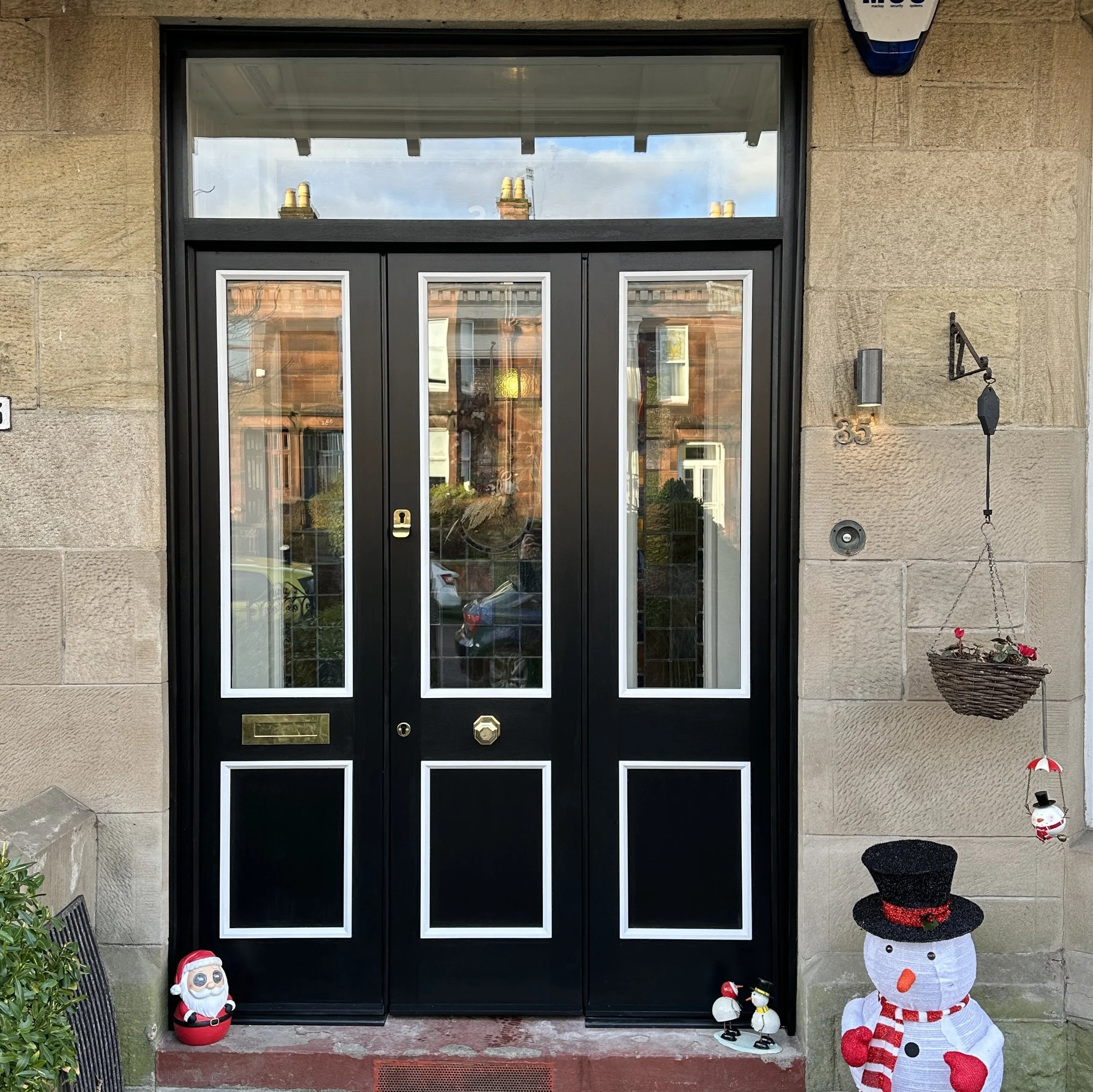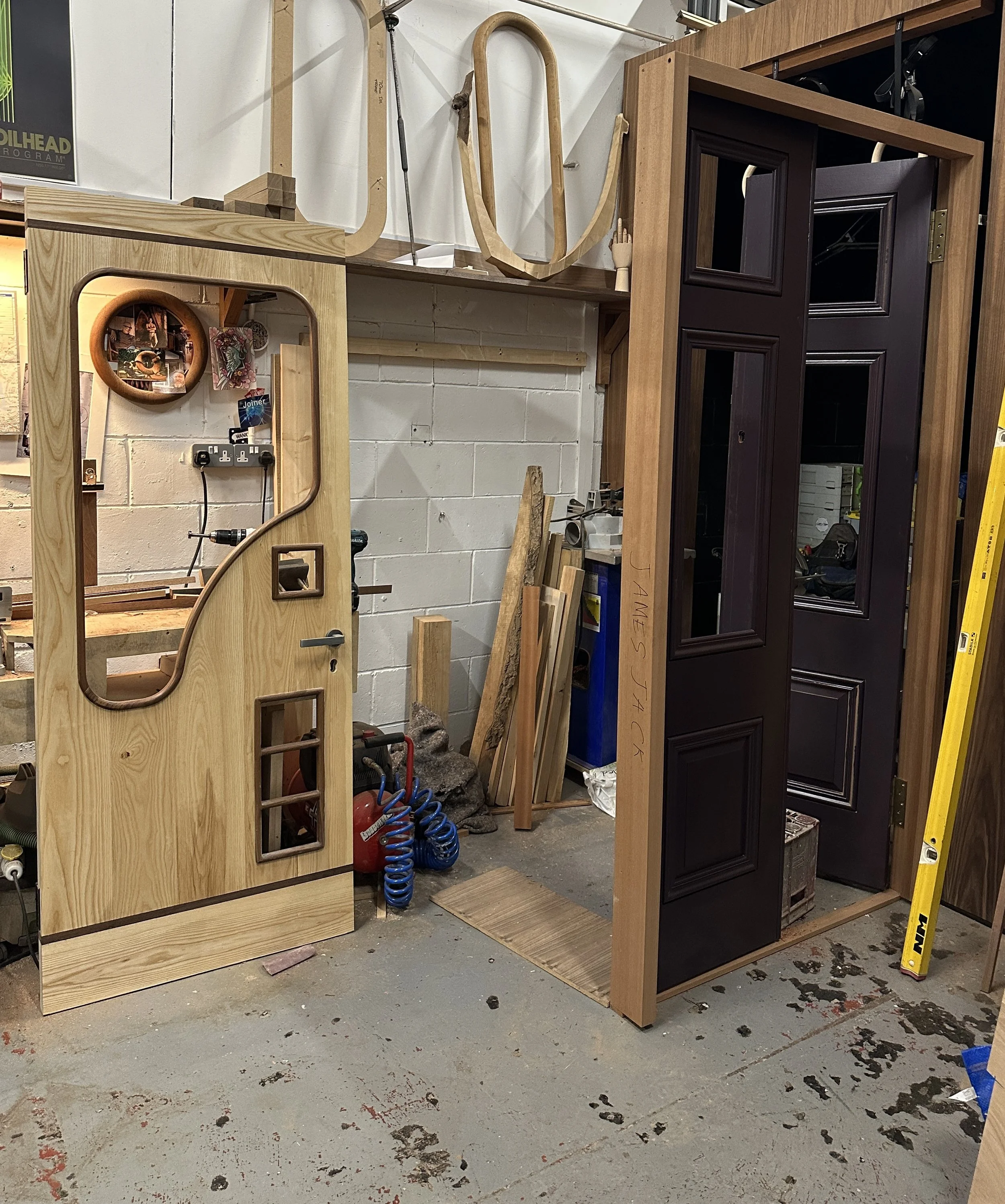How To: Cut crown moulding
/Cutting crown moulding isn't the most difficult of tasks. I've got a few things I keep in my mind notes that keeps it simple and easy to remember what way to slide the saw to make the correct cut. If you do this for a job this probably won't be anything new to you but read through and you might pick up something useful. If you know a better way let me know - sharing caring ;)
There is a Kreg jig you can buy that allows you to cut it on the flat, I worked with a great wee joiner who had the jig and really liked it, I don't have the jig and I don't intend on buying one anytime soon so for now this is the way I'll be doing my crown moulding. If you're a DIYer and fancy taking on this task, you don't need an expensive saw setup to do it. I'm doing this wee demo in the workshop and I have a fairly inexpensive Makita MLS100 Mitre Saw that I got as a permanent shop saw, I have a bigger, better and more expensive Festool saw for taking to the jobsite but the Makita does the job and the cheapest place to get it is ToolStop I'm sure if you do a google search you can get a discount code for them and they have super fast delivery too.
The way I remember to place and cut crown moulding into the saw is "Upside down and backwards" By upside down I mean: the crown moulding gets placed on the saw upside down, take the table of the saw as being the ceiling and the fence as being the wall. By backwards I mean: If you are cutting the piece for the left hand side of the room cut it from the right hand side of the material. Upside down and backwards. The first thing I like to do is to sit the moulding in posish and mark a line then attach a piece of scrap wood along the front of the saw. This makes it easy to set the material in the same position every time and not have to count on my hands holding it exact with a death grip. The fence on the saw is just a sacrificial fence I fitted to give me the height to rest the moulding on.
The first piece I'm doing is an external mitre. A simple way to remember which side to slide the saw to when doing external mitres is: External right slide the saw to the right, external left swing the saw to the left.
The first cut is the right side of the mitre (external right) so my saw is at the right 45° mark then I make the cut. My second cut is the left side of the mitre (external left) and I swing the saw to the left 45° mark and chop chop choppy.
Once they're cut I use glue with Collins Spring Clamps to fix the joint together. I like to use TiteBond 3 glue, it's a good glue. The spring clamps are great for pre-assembly, I try to pre-assemble as much as possible when doing this type of work, it keeps everything moving along nicely. I'd recommend the clamps, they're another must have tool. If you get in touch with Dave at Collins Tools tell him Neil the Scottish guy sent you.
The clamps look a bit like a cock and balls but they do the job.
When doing an internal joint you can either do a mitre or a scribe/cope joint, its probably personal preference but I've done both and had success with both. An example of when I would use an internal mitre would be on a coffered ceiling, say that inside each coffer you have it lined with crown moulding, you can cut the moulding to size with internal mitres and pre-assemble enough for a full ceiling then fit in one foul swoop. You couldn't do that with a coped internal joint. When cutting an internal mitre there is a simple way to remember which way to swing the saw, you are cutting the 'opposites' What I mean is: When cutting an internal right mitre you swing the saw to the left 45° mark on the saw and when cutting the internal left mitre you swing the saw to the right 45° mark.
The first cut I make is the right side of the internal mitre (internal right) so the saw is slid around to the left 45° stop, the second cut is the left side of the internal mitre (internal left) so going by the 'opposites' mind note I swing the saw to the right 45° mark and do my business.
I fit the joint together the same way as an external mitre, with glue and spring clamps. The extra step that I like to take with the internal joint is to pre drill and screw the joint together from the back. If you have some wiggle room in the coffer it should be fine with glue once clamped but if there's any movement when installing you could break the joint. I think it's good practice to throw in a few screws.
The scenario where I would use a coped internal joint would be when you are fitting crown moulding to a room and don't have any use for pre-assembling anything. The first manoeuvre for this would be to fit the piece that you will be coping to, this can be cut with square ends and fitted tight to the wall at each end. Once that is in I make a 45° cut away from the material I want to cope.
I cut the cope with my jig saw with a Collins Coping Foot fitted, it's the same guy who makes the spring clamps that makes the coping foot. It makes it pretty easy and fast, a lot faster than using a coping saw.
I probably need more practice on the coping foot because I sometimes feel the need to take an angle grinder with a 40grit sanding disc to the back of it to achieve a greater back bevel, when I was doing a bit in LA I saw guys do it in one pass and it was a sweet joint. I suppose if you do it every day it gets smoother.
I keep an off cut handy and check the fit, if needed I take a small hand file and file down bits here and there until I get a nice joint. This joint is acceptable I'd say, maybe if I was on a job I'd spend a wee five minutes or so and file a bit more to close the tiny gap at the bottom but for the most part its a nice fit and it will do for this demo.
I ran this moulding on my machine in the workshop for a job, its actually 3 pieces in one moulding, starting at the bottom we have the cove, then the fillet and it terminates with a cyma recta. This is a terminating moulding, you will notice it done in stone on a lot of old buildings in Glasgow and Paisley. More than likely it will be being used as a gutter, look out for it if you're that way inclined. #KnowYourArchitecturalMillworkBrah
Here is a ceiling I designed and put together with a couple of guys I worked with. If you notice you have the outer octagon with external mitres and the inside octagon has internal mitres. These were all pre-assembled then fitted, the adjoining beams where coped into the octagons. We had every joint going in this ceiling.
So there ye go! If you go and buy anything from either of the links I've put on here tell them where you saw the link and hopefully they'll send me some stickers or a T-shirt. Remember to support your local woodworker or independent cabinet shop, do the right thing and buy handmade.
Peace ;)
































